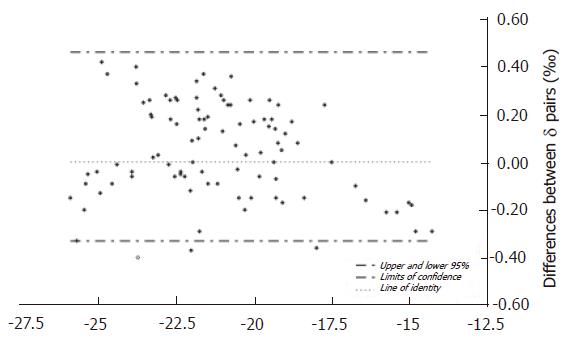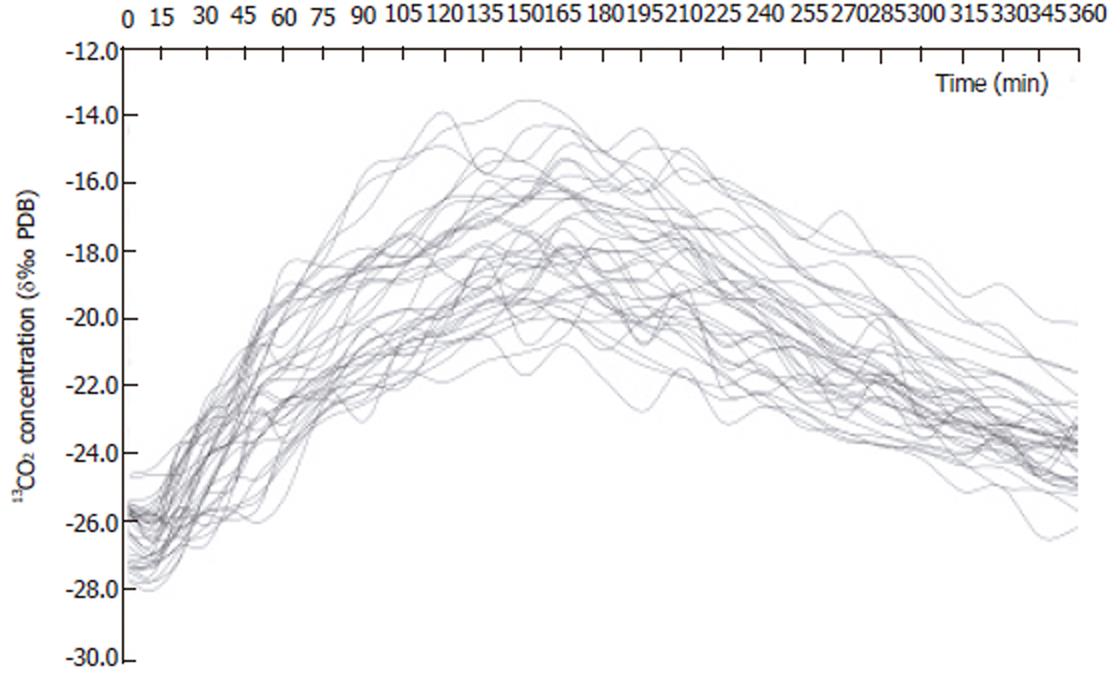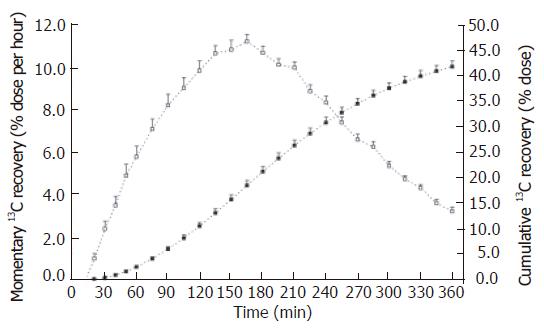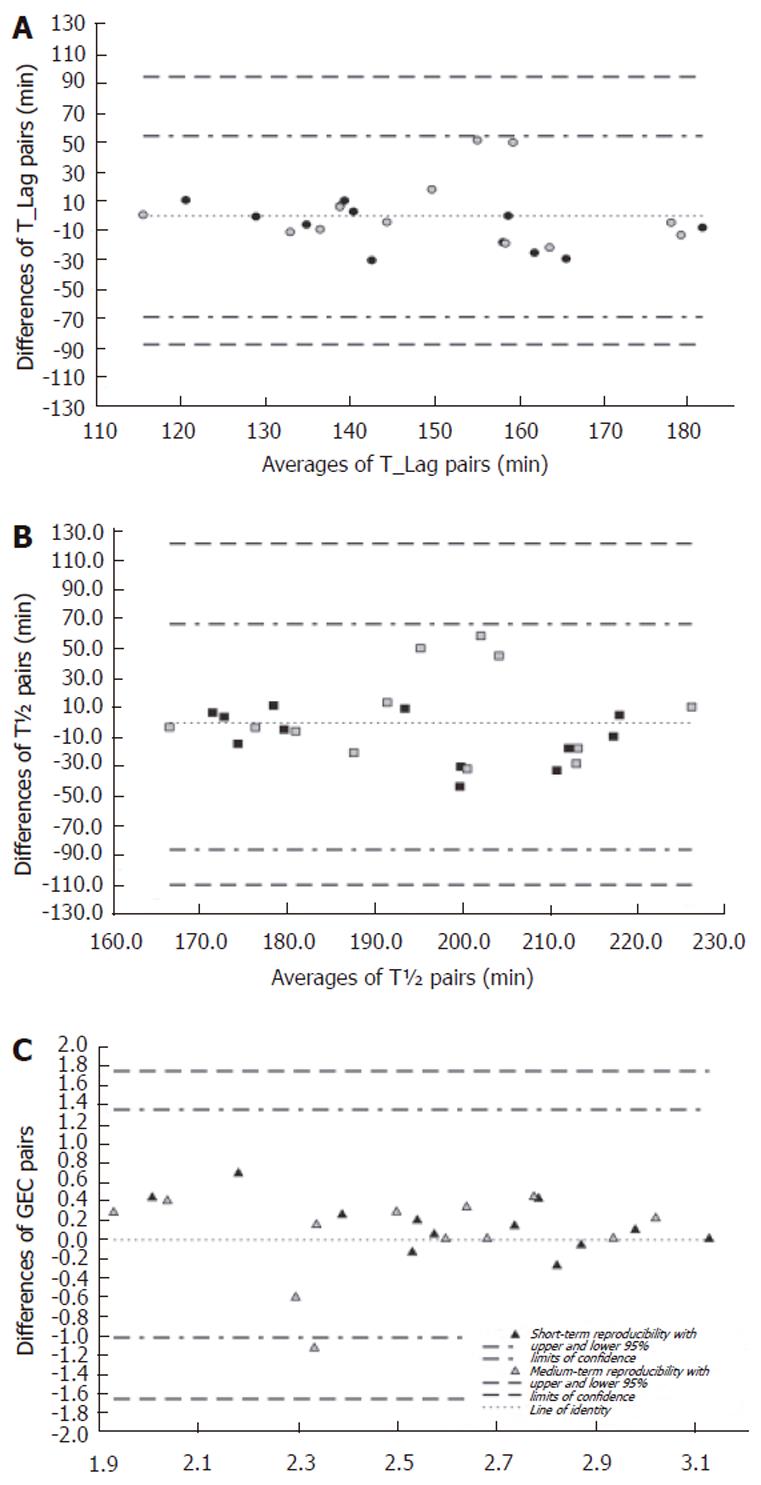Copyright
©2006 Baishideng Publishing Group Co.
World J Gastroenterol. Feb 28, 2006; 12(8): 1243-1248
Published online Feb 28, 2006. doi: 10.3748/wjg.v12.i8.1243
Published online Feb 28, 2006. doi: 10.3748/wjg.v12.i8.1243
Figure 1 Repeatability of the measurement of 13CO2 enrichment (d) in expiratory air after intake of a solid meal labeled with 75 mL (68 mg) 13C-octanoic acid.
Ninety-six pairs of d measurements taken from three randomly selected examinations were considered.
Figure 2 Individual curves reflecting the increment in 13CO2 enrichment in exhaled air after intake of a 378 kcal solid meal containing 75 mL (68 mg) 13C-octanoic acid (the 36 curves were obtained in 12 healthy subjects at three separate days).
Figure 3 Momentary (empty squares) and cumulative (filled squares) 13C recovery in exhaled air after ingestion of a 378 kcal solid meal containing 75 mL (68 mg) 13C-octanoic acid.
The data are grand means with standard errors (bars) calculated on average values obtained in 12 healthy volunteers during three examinations carried out on separate days.
Figure 4 Bland and Altman statistics (plot of differences between pairs vs their names) of the short-(open symbols) and medium-term( filled symbols) reproducibility of the measurement of the lag phase (T-Lag, panel A), the gastric half emptying time (T½ , panel B), and the gastric emptying coefficient (GEC, panel C) of the solid phase gastric emptying with a breath test using 75 mL (68 mg) 13C-octanoic acid and the isotope-selective nondispersive infrared spectrometry.
On each panel the respective borders of the 95% confidence intervals are plotted - cf. the legend of the GEC graph, panel C.
- Citation: Kasicka-Jonderko A, Kamińska M, Jonderko K, Setera O, Błońska-Fajfrowska B. Short- and medium-term reproducibility of gastric emptying of a solid meal determined by a low dose of 13C-octanoic acid and nondispersive isotope-selective infrared spectrometry. World J Gastroenterol 2006; 12(8): 1243-1248
- URL: https://www.wjgnet.com/1007-9327/full/v12/i8/1243.htm
- DOI: https://dx.doi.org/10.3748/wjg.v12.i8.1243












